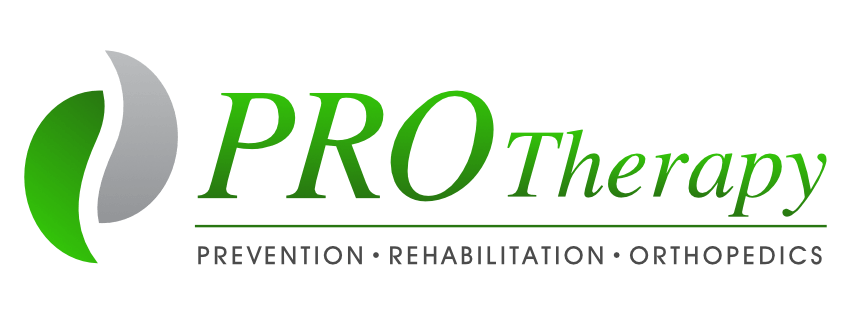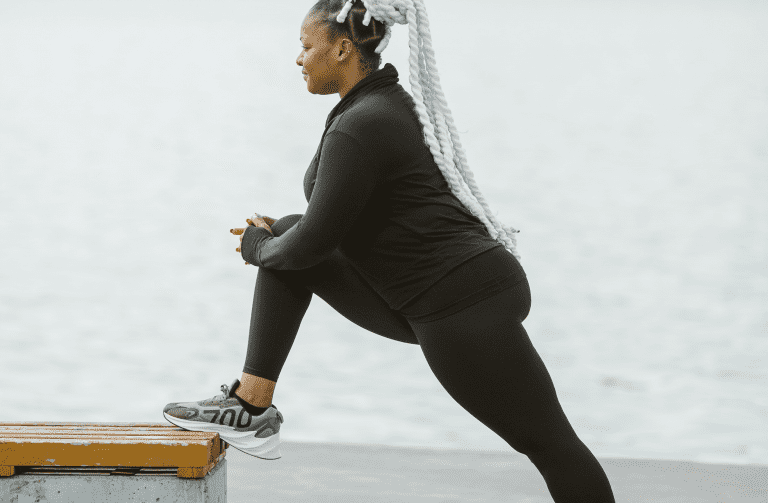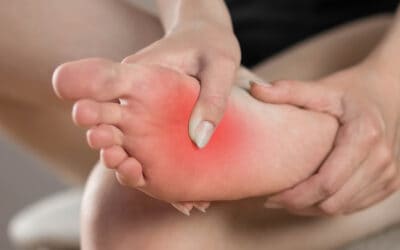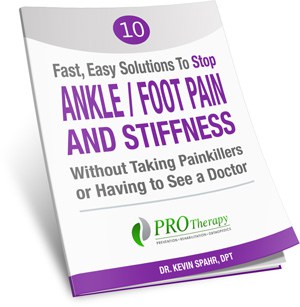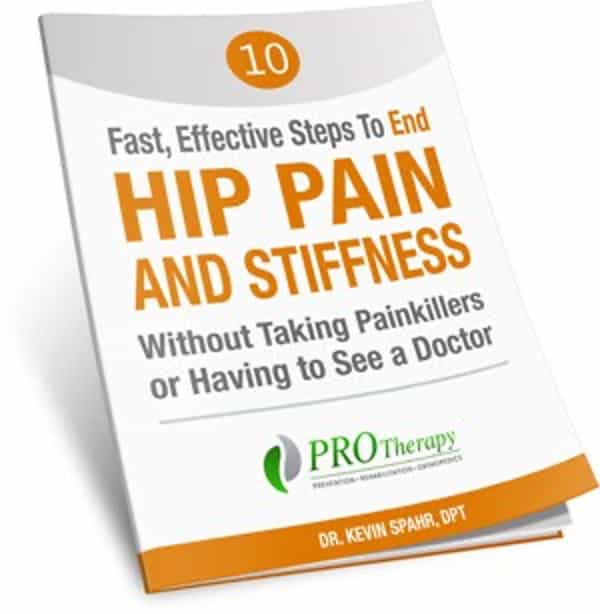Running is a fantastic way to stay active – and we highly encourage it to our patients, family, and friends! However, running can also put stress on the body, which can result in injury. It’s normal, but it’s not something you have to live with forever – and it’s also something you want to treat right away, to prevent it from getting worse.
If you’re experiencing a running injury, read on to learn how to figure out the cause, what you can do at-home, and when you need to go see a professional.
➡ Read Now: Running Injuries: What Every Runner Should Be Doing to Prevent Them
The 3 Most Common Running Injuries
Before you can treat a running injury, it’s helpful to figure out exactly what the injury is.
The only way to know for sure the cause is to visit a medical professional, but below are some of the most common running injuries. Our obligatory disclaimer is that the below isn’t meant to diagnose – but you can use these as a jumping-off point for figuring out what might be going on (just don’t literally jump, that won’t help with the pain).
1. Pulled Muscle
Pulled muscles, or muscle strains, are common for any physical activity, and can usually be treated at home. Engaging in preventative training will help avoid additional pulled muscles in the future.
Symptoms:
- Pain in one of the following areas: hamstrings, quadriceps, calf or groin.
- Pain starts a few hours after physical activity, or even the next day.
- Pain is consistent no matter activity – walking, laying down, or sitting.
Initial At-Home Treatments:
- Pause strenuous physical activity – you can still engage in physical activity, but consider walking vs. running, for example.
- Elevating the leg and applying ice to the area if swollen. If the area is not showing swelling, ice may help reduce pain but can also slow healing processes down
- AVOID over-the-counter pain medication for the first 48 hours – these over the counter medications can actually slow our body’s natural healing timeline.
- Keep moving if you’re able: if you can, low impact activities such as biking, walking, and pain free strength training to stimulate healing; importance is pain-free.
Signs You Need to Get Professional Treatment:
- The pain doesn’t go away with at-home treatments.
- The pain lasts longer than a few days.
- Your at-home treatments do nothing to ease the pain.
2. Runner’s Knee
This is easily the most common running injury – it occurs when your kneecap is irritated or undergoing an adverse stressor, which happens often with runners as the repetitive motion of running on hard surfaces can easily cause this irritation.
Symptoms:
- Pain in or around the knee – especially when active or after sitting for long periods of time with your knees bent.
- Rubbing or grinding of the knee while moving.
- Clicking of the knee while moving. Sometimes this is a sensation, sometimes it’s an audible click.
- Swollen or tender kneecaps.
- Limited range of mobility in the knees – with pain when you try to move your knee.
Initial At-Home Treatments:
- Avoiding or reduce running volume for the moment.
- A compression knee wrap.
- Pain-free hip and knee exercises such as bridges, clamshells, and leg raises.
- AVOID over-the-counter pain medication for the first 48 hours – these over the counter medications can actually slow our body’s natural healing timeline.
Signs You Need to Get Professional Treatment:
- The pain doesn’t go away with at-home treatments.
- Your at-home treatments do nothing to ease the pain.
- The rubbing, grinding, or clicking of your knee worsens.
3. Shin Splints
Shin splints are another very common running injury, and they often occur in runners with flat feet and/or who run on uneven terrain.
Symptoms:
- Pain along the inner side of your shinbone and lower leg.
- Tenderness or soreness in that same area (inner side of shinbone and lower leg.)
- Pain that flares up as your feet hit surfaces while running.
- Symptoms appear after a change in habit – running more, different route, etc.
Initial At-Home Treatments:
- Take a break from running.
- Wearing a calf compression wrap.
- Performing heel raises if able to without pain.
Signs You Need to Get Professional Treatment:
- The pain doesn’t go away with at-home treatments.
- Your at-home treatments do nothing to ease the pain.
- The pain occurs even when you’re not running – for example, flaring up while walking small distances.
The Best Treatment for Running Injuries – Physical Therapy
If you can’t figure out what’s causing your pain, and/or none of the at-home treatments work – then it’s time to see a professional. A physical therapist is specially trained to help you assess and treat your running injury – as well as preventing future injuries.
It can be tempting to just try and ignore the pain, hoping it’ll “go away on its own.” In our experience, this is rarely the case. Pain is your body’s way of telling you that something is “wrong” – it’s not going to disappear until that “wrong” is corrected.
Physical therapy is unique in that it’s a truly customized solution based on your body and your injury. It can involve stretching, joint manipulation, electrical stimulation, kinesiotaping, or a host of other treatment options. That’s why it’s crucial to choose a physical therapist who is knowledgeable and invested in your health.
Physical Therapy With PROTherapy
Partnering with a one of our Doctors of Physical Therapy is going to help you avoid future pain and resolve current pain.
We Love to Help People:
- Keep Active - So you can run after your kids all day, take your grandchildren to the park with ease, enjoy a nice round of golf, run or walk anytime that suits you.
- Stay Free From Painkillers - So you’re not always reaching in the cupboard for pills to ease the pain whenever it strikes, getting only a “quick fix” when you need a “permanent fix” – PLUS they’re no good for your long-term health, “mask” the pain and certainly don’t actually do anything to fix the problem.
- Avoid Dangerous Injections/Surgery - We’ll help you get to the root cause of what’s going on – so you don’t have to get to the point of having to face injections or surgery.
- Found Out What’s Wrong - We’ll help give you peace of mind and ensure that your problem is “corrected” and “healed” properly – also give you a set of exercises perfectly catered to you to help speed up recovery.
- Get More Enjoyment Out Of Life – So you can enjoy quality time with family and friends that your daily aches and pains steal from you – also finally get a good night of sleep without constantly tossing and turning.
Are you currently dealing with a running injury and need help? Give us a call! We offer complimentary phone and in-person consultations. We aim to meet our patients wherever they are in their journey and answer all questions we can to ensure a smooth experience at PRO Therapy. We want to help you make the best decision for you!
Download Now: The 45 Most Frequently Asked Questions About Physical Therapy
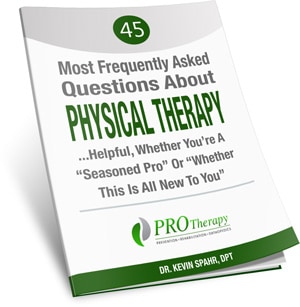
Our FREE guide on physical therapy addresses the most common questions you want to ask – and those you never even thought to ask!
PRO Therapy is an Independently Owned Orthopedic Physical Therapy Clinic. At PRO Therapy, we treat back, knee, neck/shoulder, ankle/foot, and hip pain as well as sports injuries, surgery rehabilitation, and anything else that’s causing you pain. We want everyone to have exceptional care, better access to care and be able to complete the activities in life that make them happy – free from a life of painkillers, injections, or surgeries
- Sports Physical Therapy – Preventing Overuse Injuries in Younger Athletes - March 3, 2025
- Holistic Approaches to Chronic Pain Management: A Physical Therapy Perspective - February 25, 2025
- Understanding Shockwave Treatment – Advantages of Stemwave Technology - February 13, 2025
